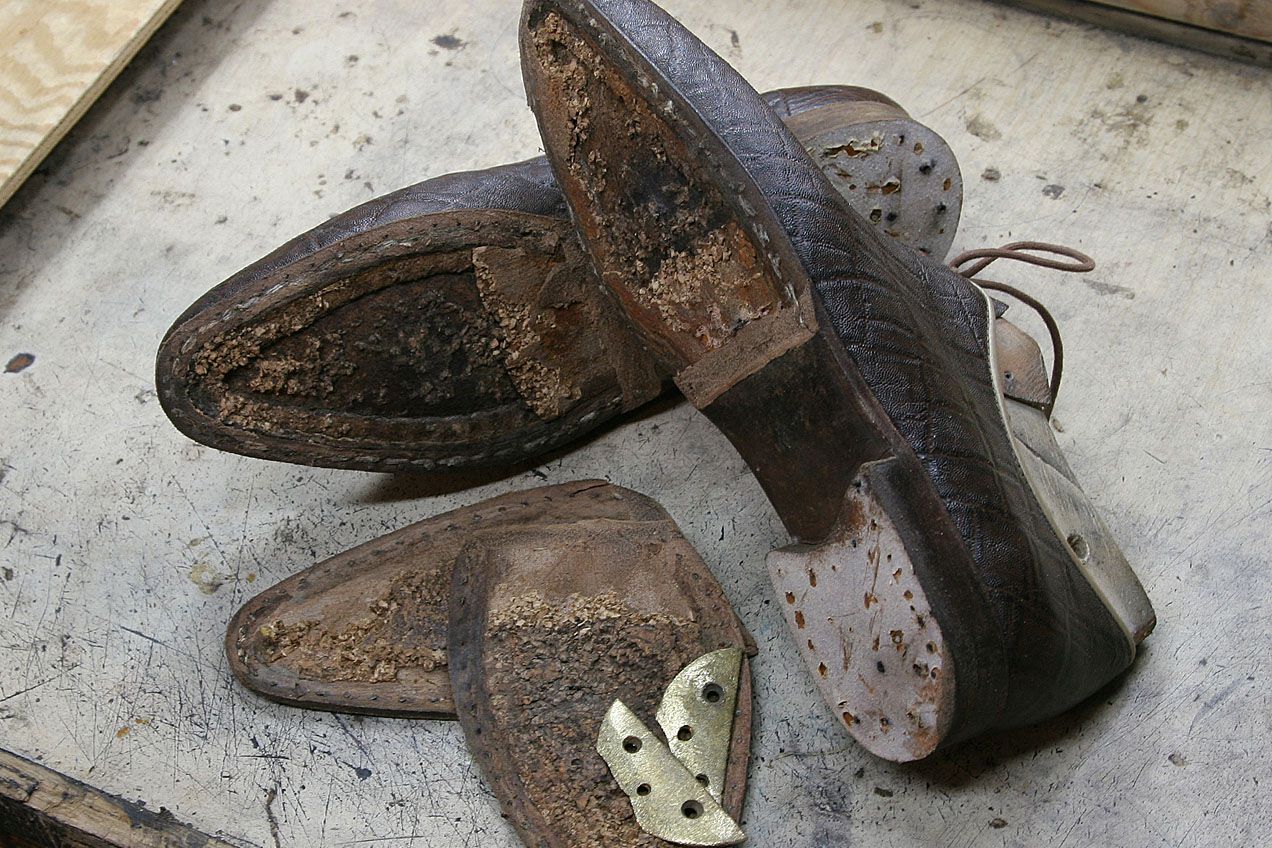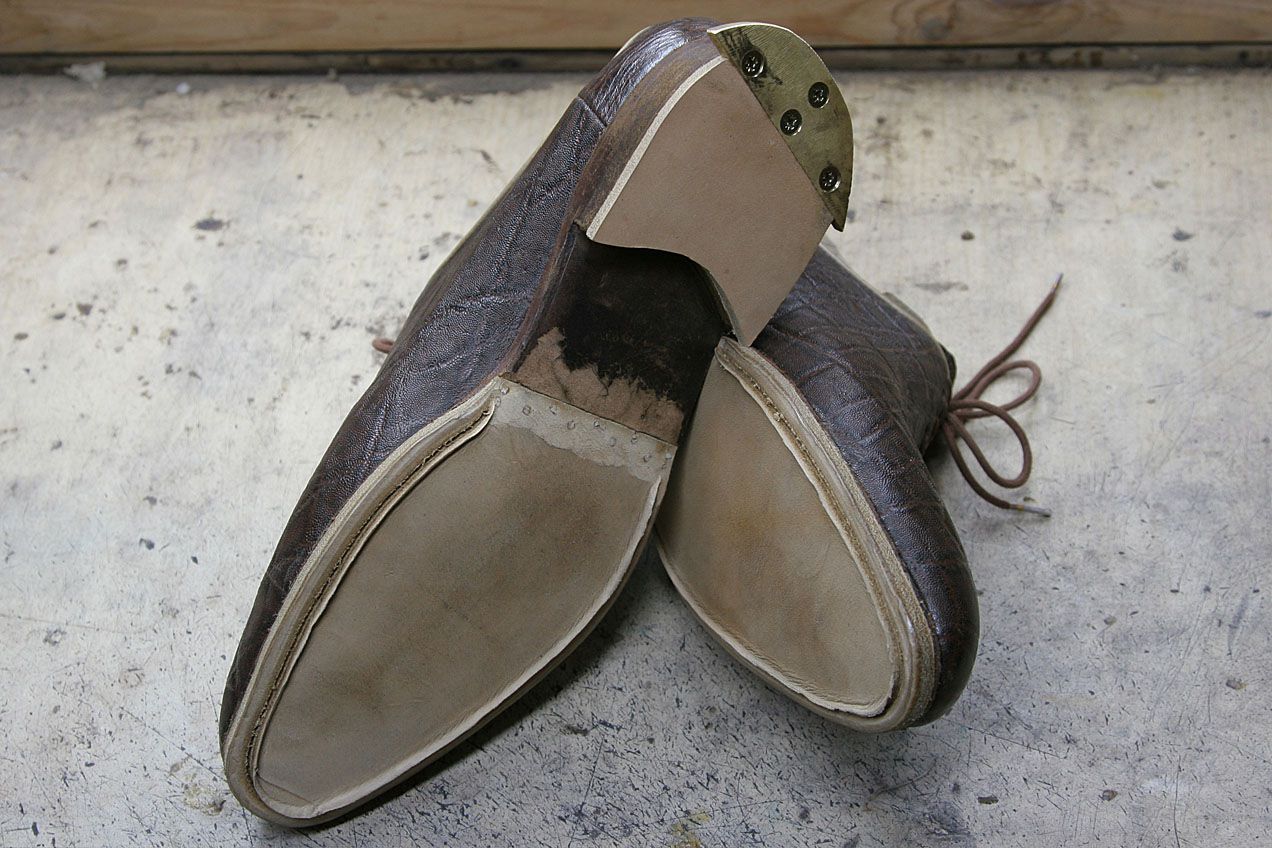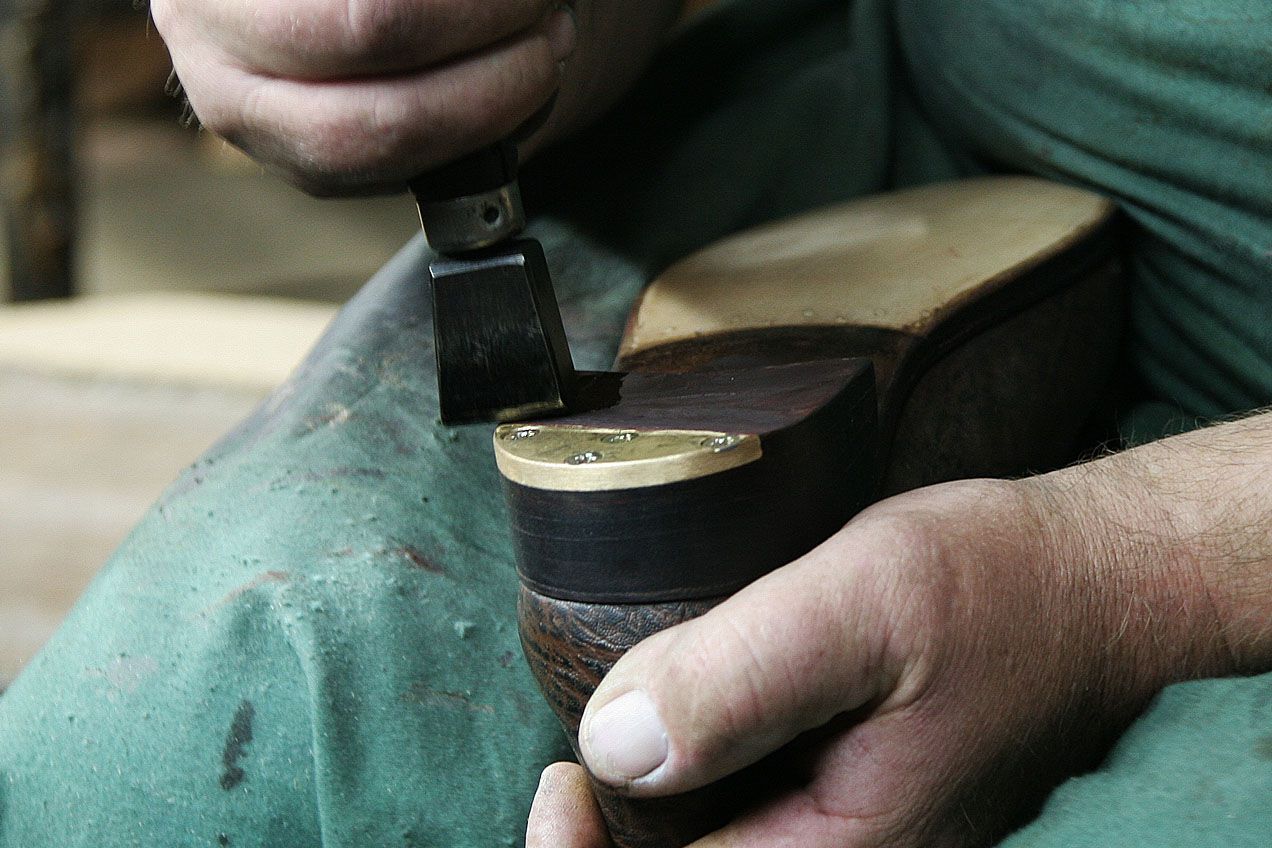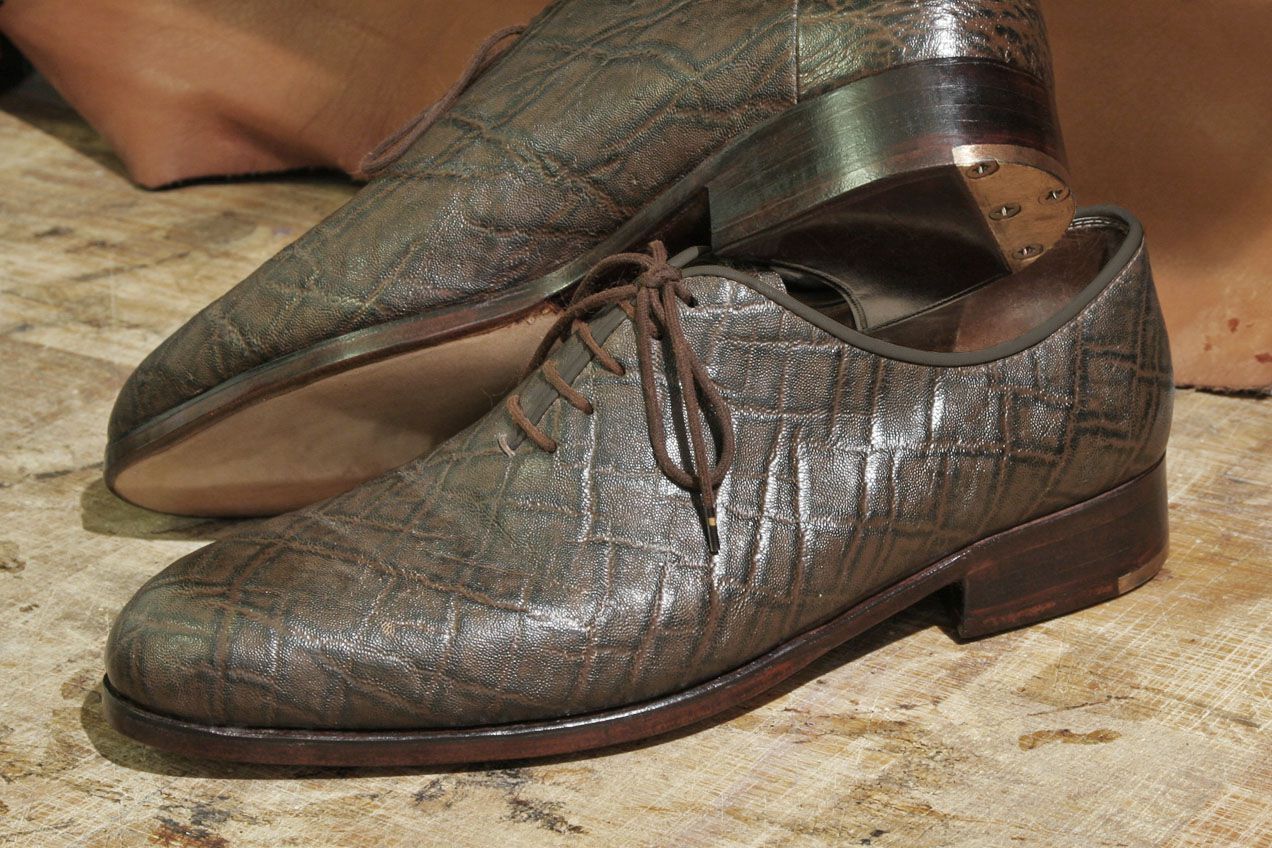Maintenance
UPKEEP
Regardless of their intended use, all types of leather shoes require proper care. Some of them may only need to be protected from the elements, while others should always shine beautifully, as if they had just been taken from the shelf of a luxury boutique. The truth is that shoes that are cared for and treated properly return the favor and will serve their wearer well for many years.
Cans of polish are the most convenient means of caring for shoes on a daily basis. They permeate deep into the leather and give it perfect elasticity. A sponge soaked with silicone may be used from time to time, but upkeep shouldn’t stop here by any means. In order to lend evening shoes a maximum shine, the best method is to use hard polishes in metal cans. These do not penetrate deep into the skin, but remain on the surface, giving the impression of a depth of color. In the last stage of polishing, it is a good idea to dampen the cotton wool slightly in water or – as some would have it – in champagne.
A small quantity of polish applied several times yields a much better effect than large quantities, which can crumble upon drying and give the impression of cracked leather. A color of shoe polish should be selected that perfectly matches the color of the uppers of the shoes or is slightly darker.
Lighter polish causes horizontal streaks to appear in spots where the shoe bends around the toes.
We discourage the use of any type of liquid polish that, upon drying, leaves a coating on the leather that is very difficult to remove. This kind of polish quickly causes shoes to appear damaged, and this is the beginning of the end for shoes – regardless of their age.
Shoes that are very dirty should be cleaned when more time is available to devote to them. Laces and shoe trees should be removed and the shoes should be bathed in warm water with a gentle detergent, e.g. body wash or dish liquid. A damp sponge should be used to wipe their interiors as well. Dirt can be removed from the welt (the edge of the sole) with the aid of a small brush, e.g. a toothbrush. Once the welts and the entire surface of the soles are dry, they should be greased using an uncolored cream. Remember that the shoes should be dried with the shoe trees inserted. Drying should take place in a warm location with air circulation, but never beside a heater, as this could crack even the highest quality leather. The dried uppers of the shoes should be greased using coloring lanolin polish made on a foundation of beeswax. Rub small quantities into them using a soft rag and circular motions, and remove any excess polish. Effective polishing can be accomplished using... women’s pantyhose.
We recommend taking your time with it.
Preparing a pair of shoes for a business meeting or a social occasion may take up to half an hour. You can make the job more pleasant by playing a classical music CD – a tried and tested method.
Note: greasy preparations for impregnating leather prevent leakage, but they make it very difficult to restore a beautiful shine to shoes. It is better to use protectors that come in spray form.
We recommend the following tried and proven producers of leather treatment products: Saphir, Collonil, Nubian and Meltonian.
REPAIRS
Handmade shoes can be kept in good condition for several or even a dozen or so years. They can be repaired multiple times to restore their aesthetic and practical qualities almost entirely. In our workshop, the repair process is identical to the shoemaking process. The shoes are fitted over the same lasts that were used in sewing them; this has the effect of restoring them to their original shape. Worn out soles, heels and linings are repaired using materials from current orders. In addition to leathers, we make use of elements produced by Vibram to reinforce the soles of shoes.

UPKEEP
Regardless of their intended use, all types of leather shoes require proper care. Some of them may only need to be protected from the elements, while others should always shine beautifully, as if they had just been taken from the shelf of a luxury boutique. The truth is that shoes that are cared for and treated properly return the favor and will serve their wearer well for many years.
Cans of polish are the most convenient means of caring for shoes on a daily basis. They permeate deep into the leather and give it perfect elasticity. A sponge soaked with silicone may be used from time to time, but upkeep shouldn’t stop here by any means. In order to lend evening shoes a maximum shine, the best method is to use hard polishes in metal cans. These do not penetrate deep into the skin, but remain on the surface, giving the impression of a depth of color. In the last stage of polishing, it is a good idea to dampen the cotton wool slightly in water or – as some would have it – in champagne.
A small quantity of polish applied several times yields a much better effect than large quantities, which can crumble upon drying and give the impression of cracked leather. A color of shoe polish should be selected that perfectly matches the color of the uppers of the shoes or is slightly darker.
Lighter polish causes horizontal streaks to appear in spots where the shoe bends around the toes.
We discourage the use of any type of liquid polish that, upon drying, leaves a coating on the leather that is very difficult to remove. This kind of polish quickly causes shoes to appear damaged, and this is the beginning of the end for shoes – regardless of their age.
Shoes that are very dirty should be cleaned when more time is available to devote to them. Laces and shoe trees should be removed and the shoes should be bathed in warm water with a gentle detergent, e.g. body wash or dish liquid. A damp sponge should be used to wipe their interiors as well. Dirt can be removed from the welt (the edge of the sole) with the aid of a small brush, e.g. a toothbrush. Once the welts and the entire surface of the soles are dry, they should be greased using an uncolored cream. Remember that the shoes should be dried with the shoe trees inserted. Drying should take place in a warm location with air circulation, but never beside a heater, as this could crack even the highest quality leather. The dried uppers of the shoes should be greased using coloring lanolin polish made on a foundation of beeswax. Rub small quantities into them using a soft rag and circular motions, and remove any excess polish. Effective polishing can be accomplished using... women’s pantyhose.
We recommend taking your time with it.
Preparing a pair of shoes for a business meeting or a social occasion may take up to half an hour. You can make the job more pleasant by playing a classical music CD – a tried and tested method.
Note: greasy preparations for impregnating leather prevent leakage, but they make it very difficult to restore a beautiful shine to shoes. It is better to use protectors that come in spray form.
We recommend the following tried and proven producers of leather treatment products: Saphir, Collonil, Nubian and Meltonian.
REPAIRS
Handmade shoes can be kept in good condition for several or even a dozen or so years. They can be repaired multiple times to restore their aesthetic and practical qualities almost entirely. In our workshop, the repair process is identical to the shoemaking process. The shoes are fitted over the same lasts that were used in sewing them; this has the effect of restoring them to their original shape. Worn out soles, heels and linings are repaired using materials from current orders. In addition to leathers, we make use of elements produced by Vibram to reinforce the soles of shoes.







